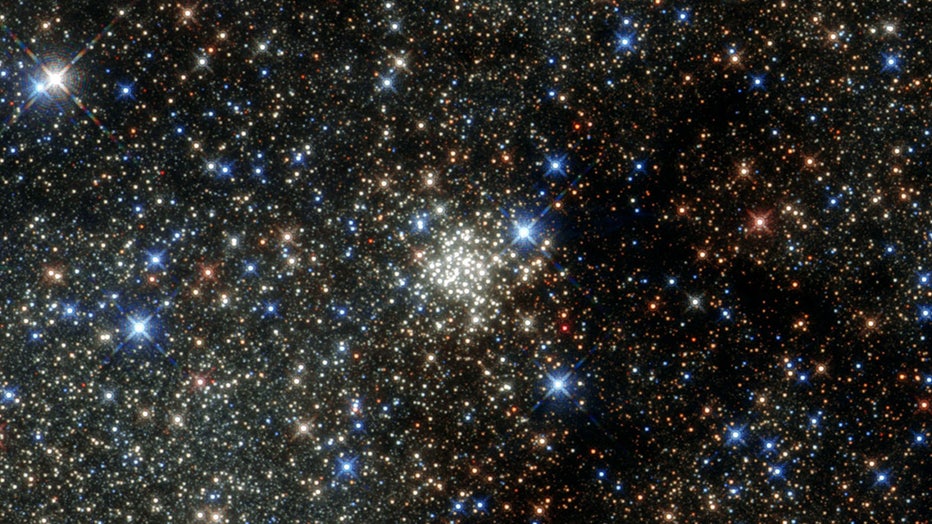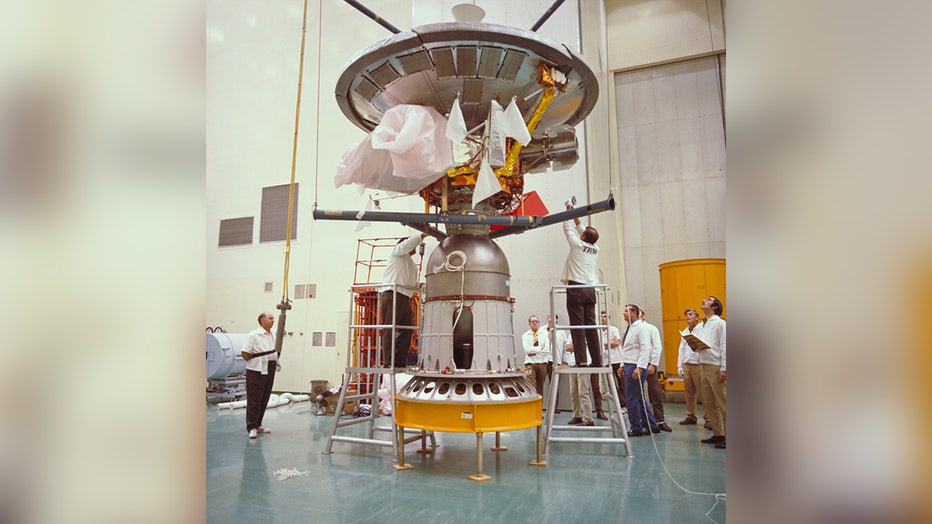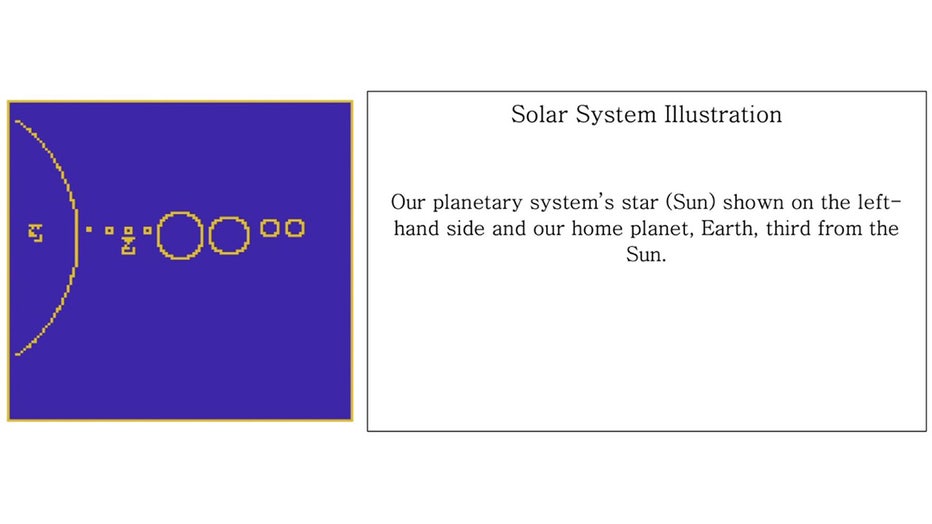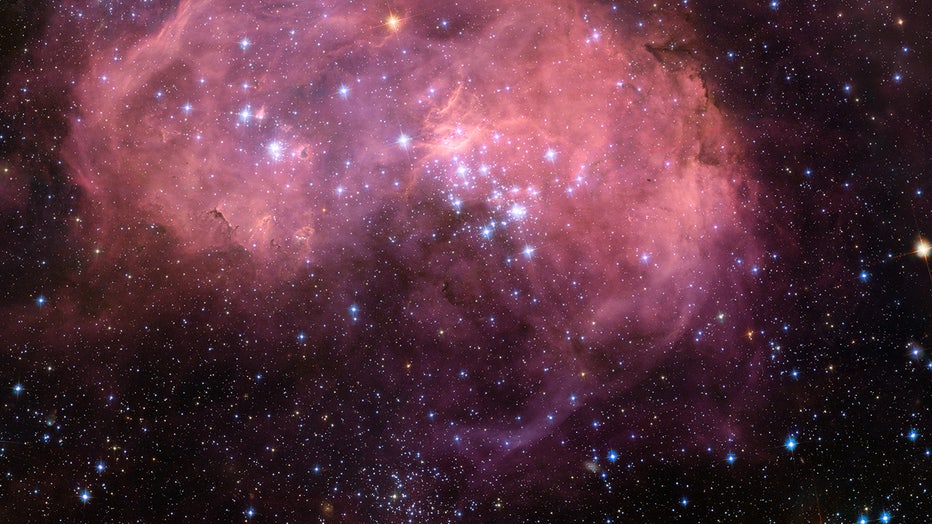Scientists create message to beam into outer space but say humanity isn’t ready yet
An international team of scientists has studied the possibility of beaming a message into outer space aimed at any extraterrestrial life that may also be listening or looking for other life forms.
The study outlines how this project, called a Beacon in the Galaxy (BITG), could hypothetically establish a universal means of communication of what Earth and its residents are like to any aliens in the cosmos.
"Driven by broader inquiry, ancient scholars gazed at the stars wheeling through the vault of night and inevitably confronted what is perhaps the most profound of all questions: Are we alone, or are those points of light in the sky home to others we may yet come to know," study authors wrote.
"This project, for me personally, is one of more than 20 years," Jonathan Jiang, who is a co-author of the study and is a principal scientist at NASA’s Jet Propulsion Laboratory.
Jiang noted that while he is heavily involved in the BITG project, he is working as an individual scientist and that this is not a NASA initiative.

FILE - This NASA/ESA Hubble Space Telescope image presents the Arches Cluster, the densest known star cluster in the Milky Way. (NASA Goddard)
Jiang first became fascinated with potentially communicating with alien life when he was young.
Highlighting NASA’s Pioneer missions 10 (1972) and 11 (1973), Jiang spoke about how the aim of both missions was not just deep space exploration but potentially making contact with extraterrestrial intelligent life (ETI). Both spacecraft carried a graphic message in the form of a 6-by-9-inch gold anodized plaque bolted to the mainframe.

FILE -Pioneer F (Pioneer-10) spacecraft delivered to NASA at Cape Kennedy. (NASA)
The metal plaques had a time and place of origin so that they may one day find themselves in the hands (or tentacles) of any other spacefarers out in the galaxy.
While attending a conference nearly three years ago, Jiang said that this topic of sending messages to outer space aimed at aliens came up and that he wasn’t the only one fascinated with it.
"So I said, hey, let’s do that," Jiang said as he snapped his fingers.
So he and several scientists got together to update the outgoing message from the 1970s.
Beaming messages into outer space
In 1974, the Arecibo Radio Telescope in Puerto Rico, which suffered major structural damage and was eventually shut down in 2020, sent out the first deliberate message into outer space, according to SETI.
The message was broadcasted as a radio signal towards the M13 globular cluster some 25,000 lightyears away, according to study authors.
The message was also in binary and included the base-10 mathematics system, the most common elements to humans, and our Solar System - including the location of Earth.

FILE - This aerial view shows the damage at the Arecibo Observatory after one of the main cables holding the receiver broke in Arecibo, Puerto Rico, on Dec. 1, 2020. (RICARDO ARDUENGO/AFP via Getty Images)
Even more recently, in 1999 and 2003, the Evpatoria Transmission Messages (ETMs) were sent containing "easily distinguishable alphabet system and included an exhaustive list of our basic mathematics and physics knowledge," the study said.
But the most important thing about the ETMs were that they contained an invitation to respond, which the Arecibo transmission did not have.
How would the newest message be sent?

FILE - Aerial panoramic photo taken on Dec. 19, 2021 shows China's Five-hundred-meter Aperture Spherical Radio Telescope FAST under maintenance in southwest China's Guizhou Province. (Ou Dongqu/Xinhua via Getty Images)
The most recent message could potentially be sent through the Five-hundred-meter Aperture Spherical radio Telescope ("FAST") located in southwest China.
A second option would be the SETI Institute’s Allen Telescope Array ("ATA") in northern California, scientists posit.
However, despite having these powerful tools at our disposal, scientists said these two telescopes can only receive radio transmissions, not transmit them.
"Both may possibly be upgraded through future enhancements that will enable the transmission of messages as well. If so profound a goal as communication with alien civilizations is to be realized the powerful tools of FAST and ATA must be paired with an equally well designed and constructed message to transmit," study authors suggested.
Whenever these upgrades happen, scientists plan to send the message to a star cluster in the Milky Way that they believe has the highest probability to harbor life.
The star cluster is between 6,500 and 19,500 light-years away from the center of the galaxy.
What would the entire message say?
In order to potentially get an understandable message across to aliens, scientists need to consider the many differences that may occur should there be life outside of our solar system.
For instance, Jiang said that while it is very possible an extraterrestrial will harbor the same molecular characteristics that we humans carry, their features may differ.
And, aliens are probably speaking a different language than we speak on Earth and could be using a completely different math system compared to us.
The one thing that can be universally understood, according to Jiang, is binary.

Digitized image of Earth's location in the solar system ( Beacon in the Galaxy Project)
"Binary should be universal. Why? Because our consciousness is formed by many yes and nos, on or offs. Is this a computer or a table? Am I talking to a person or I’m drinking tea?" Jiang explained. "Consciousness is millions of yes or no put together."
Scientists propose sending the message in binary code via radio waves toward a habitable part of the Milky Way.
"The message could feasibly contain coded depictions of great cultural works of art and architecture and/or images of nature such as forests, mountains, and oceans," authors suggested.
The message would also contain digitized images of the molecular makeup of hydrogen and helium, two of the most important elements needed to create life, and even digitized images of the male and female forms.
Jiang also explained the reasoning behind the image of the male and female forms. Not only is it meant to show aliens what we look like, but it’s also meant to show equality between man and woman.
"There’s two deep reasons for that. The first one is, the definition of life is reproduction. Life moves on because it’s able to reproduce itself," Jiang said. And the second reason for the images, Jiang explained was that in 1972, when Pioneer 10 launched, inside the spacecraft was a gold disk that had an image of a man and woman.
On the 1972 disk, the man had his hand raised and the woman stood beside him with her arms down.
"The original image is a man raising his hand. The woman is sort of, obeying. We want to update that to show man and woman are equal," Jiang said.
So in the updated image, both the man and woman have a hand raised.
Also included in the message will be:
- Earth’s binary and decimal systems, prime numbers including the largest prime number
- Mathematical operations (addition, subtraction, multiplication, division)
- Exponential operations
- Algebra
- Particle physics
- DNA structure
- A map of our solar system and where Earth is located
- An image of Earth and its characteristics
Along with the digitized images and elements, scientists hope to include a timestamp so that if/when aliens receive the message, they will know which general direction to point their return message, scientists hypothesized.
"Humanity has, we contend, a compelling story to share and the desire to know of others’ – and now has the means to do so," authors wrote.
Why we’re not sending it...yet
Scientists said they had no plans to send out the updated message — not yet anyway.
The co-authors of this study have agreed that humanity is not ready to send out a collective message into outer space.
In order to send a message into the cosmos on behalf of Earth, Jiang explained that the entire world must agree to do it, not just one institute or one entity.
That could prove difficult considering the state of the world as we know it now, according to Jiang and his co-authors.
And, hypothetically, if Earth can somehow agree on this one thing and we beam out the message into space, we have to live long enough to receive a response back.
It could take tens of thousands of years to receive a response, according to Stuart Taylor, co-author of the study and astrophysicist at SETI, and who knows if humans can survive that long.
"The tendency that humans try to destroy ourselves is the greatest danger," Jiang said
"Currently, there’s lots of problems with humanity, and Stephen Hawking worried about whether or not we can survive another thousand years," Jiang added.
But it is not all doom and gloom. Both Jiang and Taylor hope this study, which is available to the public, will ignite hope and a desire to carry on the work that is left behind.

FILE - Image release June 22, 2010 A spectacular new NASA/ESA Hubble Space Telescope image — one of the largest ever released of a star-forming region — highlights N11, part of a complex network of gas clouds and star clusters within our neighbouring (NASA Goddard)
If the message is not sent out this time around, maybe future generations will be inspired to update the message once more, and again, and again, and again until we reach a point as a human species where we are ready to collectively agree on reaching out to other intelligent life forms in our galaxy or beyond.
"It’s an inspirational thing to do," Jiang said. He hopes that maybe his children’s generation will be the ones to send out the message or at least evoke discussion to one day reach for the stars.
"I’m glad we inspired those young people to think about that. And inspire humanity because don’t forget, we are citizens of the Earth," he added.
This story was reported out of Los Angeles.

